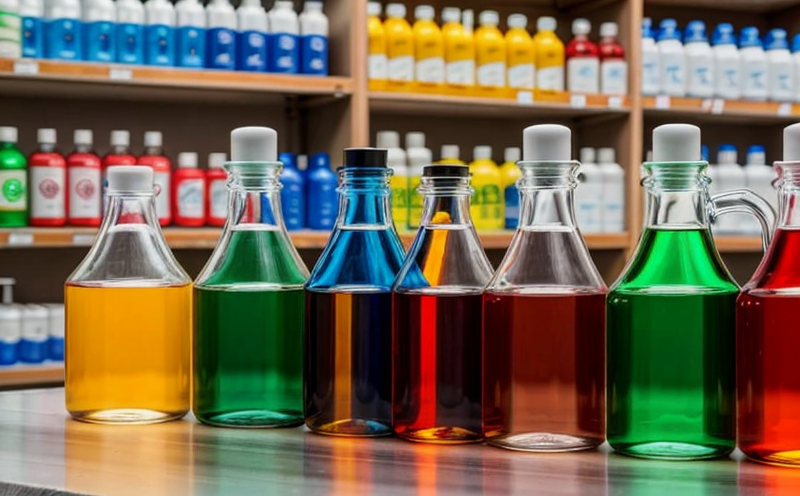GB T 23344 Determination of polycyclic aromatic hydrocarbons PAHs
The determination of Polycyclic Aromatic Hydrocarbons (PAHs) in textiles is crucial for ensuring product safety and compliance with environmental regulations. PAHs are a group of chemicals that can be found in various textile products, including clothing materials, upholstery, and other consumer goods. These compounds arise from the incomplete combustion of organic matter and are known carcinogens or mutagens under certain conditions.
The GB T 23344 standard specifies a method for determining PAHs in textiles using liquid chromatography with fluorescence detection. This technique is widely used due to its high sensitivity and specificity, making it suitable for detecting even trace amounts of these compounds. The primary goal of this test is to ensure that textile products meet the strictest environmental and health standards.
Textile manufacturers must adhere to stringent regulations regarding PAH content because exposure to these chemicals can lead to adverse health effects such as cancer or developmental issues in children. Therefore, comprehensive testing procedures like those outlined in GB T 23344 are essential for maintaining product safety and ensuring compliance with international standards.
The process involves several key steps:
- Sample preparation: Properly handling the samples to avoid contamination.
- Extraction: Utilizing appropriate solvents to extract PAHs from the textiles.
- Cleanup: Removing interfering substances that could affect the analysis results.
- Analysis: Using high-performance liquid chromatography (HPLC) equipped with a fluorescence detector for precise quantification of PAH levels.
The acceptance criteria for this test are based on predefined limits set by relevant authorities. Any textile product exceeding these thresholds may pose risks to human health and must be reprocessed or recalled from the market.
Our laboratory employs advanced analytical equipment and experienced personnel who can perform GB T 23344 testing efficiently and accurately. We offer reliable results that meet international standards, providing peace of mind for our clients concerning their product safety and compliance efforts.
| Applied Standards | Description |
|---|---|
| GB T 23344-2009 | Determination of polycyclic aromatic hydrocarbons in textiles by liquid chromatography with fluorescence detection. |
| ISO 17256:2018 | Analytical methods for determining PAHs in consumer products. |
Applied Standards
| Standard | Description |
|---|---|
| GB T 23344-2009 | This standard provides a detailed procedure for the extraction, cleanup, and analysis of PAHs in textiles using HPLC with fluorescence detection. |
| ISO 17256:2018 | An international standard that covers analytical methods for determining PAHs across various consumer products, including textiles. |
Industry Applications
The determination of PAHs in textiles is not only important from a health perspective but also plays a significant role in environmental protection. Textile manufacturers are required by law to ensure their products do not contain excessive levels of harmful substances.
- Consumer Products: Clothing, footwear, and accessories made from textile fibers must comply with strict PAH limits.
- Furniture and Upholstery: These materials often come into direct contact with consumers, particularly children. Ensuring they are free of harmful chemicals is paramount.
- Carpeting: Floor coverings can release volatile organic compounds (VOCs), including PAHs, which may affect indoor air quality and occupant health.
- Baby Products: Items like diapers or baby clothing should be especially monitored for PAH content due to their frequent contact with infants' skin.
The use of GB T 23344 ensures that textile products meet both national and international standards, enhancing consumer trust and satisfaction. Compliance also opens up new market opportunities in regions where stringent environmental laws are enforced.
| Industry Applications | Description |
|---|---|
| Consumer Products | Clothing, footwear, and accessories requiring PAH compliance for health and safety reasons. |
| Furniture and Upholstery | Mattresses, sofas, and other furniture items that could potentially release harmful chemicals into the air or skin contact area. |
| Carpeting | Indoor flooring materials whose emissions might impact indoor air quality significantly. |
| Baby Products | Diapers, clothing, and other items that can be directly worn by infants, necessitating extra scrutiny for PAHs. |
Competitive Advantage and Market Impact
Adopting the GB T 23344 standard in your testing protocols can provide several competitive advantages:
- Innovation: Stay ahead of competitors by integrating cutting-edge analytical techniques into your product development processes.
- Customer Trust: Demonstrate commitment to product safety and environmental responsibility, which builds long-term customer loyalty.
- New Markets: Expanding into markets with stringent regulations can be achieved more easily if you already meet these standards internally.
By ensuring compliance with GB T 23344, textile manufacturers and processors not only protect public health but also contribute to sustainable practices within the industry. This approach fosters trust among stakeholders while positioning companies as leaders in ethical manufacturing.





